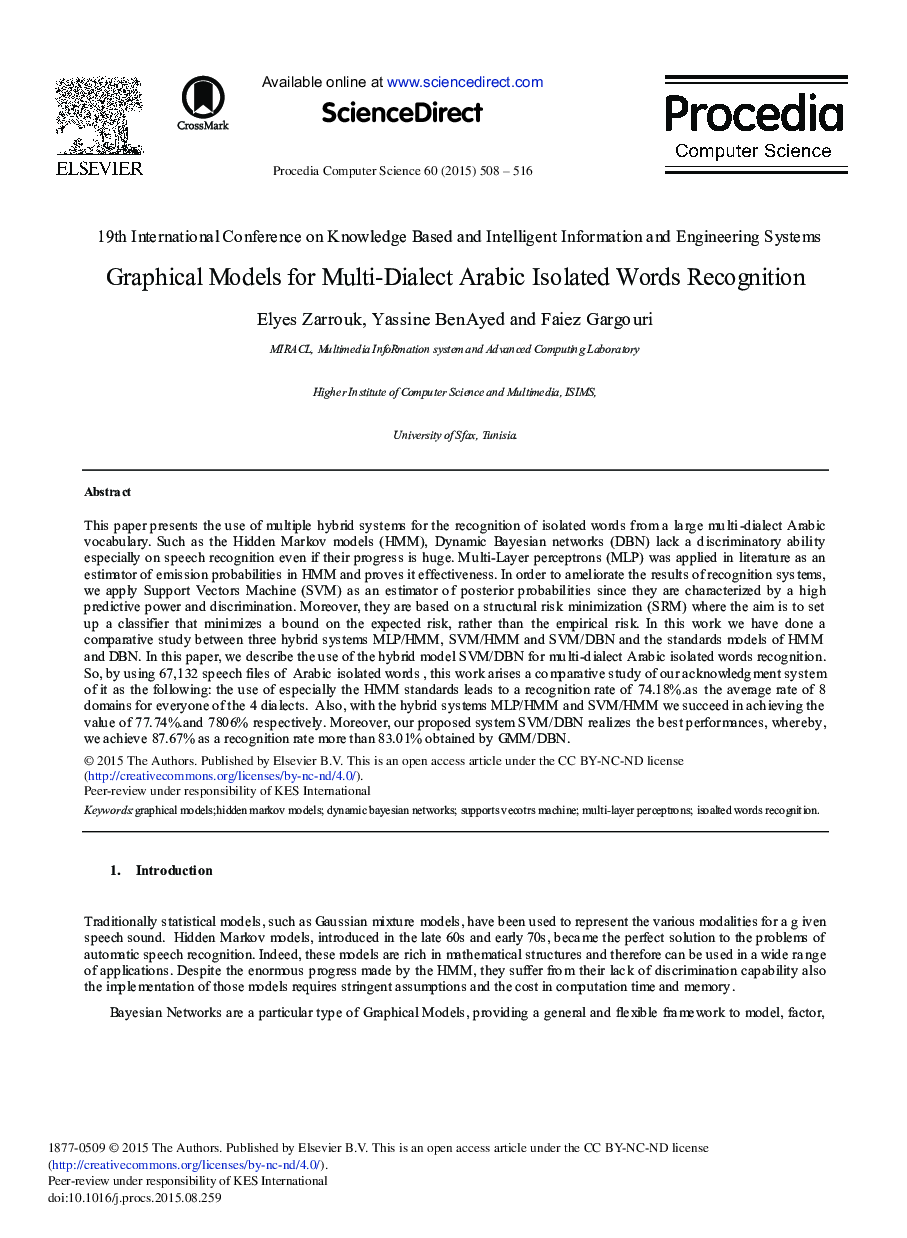| Article ID | Journal | Published Year | Pages | File Type |
|---|---|---|---|---|
| 489577 | Procedia Computer Science | 2015 | 9 Pages |
This paper presents the use of multiple hybrid systems for the recognition of isolated words from a large multi-dialect Arabic vocabulary. Such as the Hidden Markov models (HMM), Dynamic Bayesian networks (DBN) lack a discriminatory ability especially on speech recognition even if their progress is huge. Multi-Layer perceptrons (MLP) was applied in literature as an estimator of emission probabilities in HMM and proves it effectiveness. In order to ameliorate the results of recognition systems, we apply Support Vectors Machine (SVM) as an estimator of posterior probabilities since they are characterized by a high predictive power and discrimination. Moreover, they are based on a structural risk minimization (SRM) where the aim is to set up a classifier that minimizes a bound on the expected risk, rather than the empirical risk. In this work we have done a comparative study between three hybrid systems MLP/HMM, SVM/HMM and SVM/DBN and the standards models of HMM and DBN. In this paper, we describe the use of the hybrid model SVM/DBN for multi-dialect Arabic isolated words recognition. So, by using 67,132 speech files of Arabic isolated words, this work arises a comparative study of our acknowledgment system of it as the following: the use of especially the HMM standards leads to a recognition rate of 74.18%.as the average rate of 8 domains for everyone of the 4 dialects. Also, with the hybrid systems MLP/HMM and SVM/HMM we succeed in achieving the value of 77.74%.and 7806% respectively. Moreover, our proposed system SVM/DBN realizes the best performances, whereby, we achieve 87.67% as a recognition rate more than 83.01% obtained by GMM/DBN.
